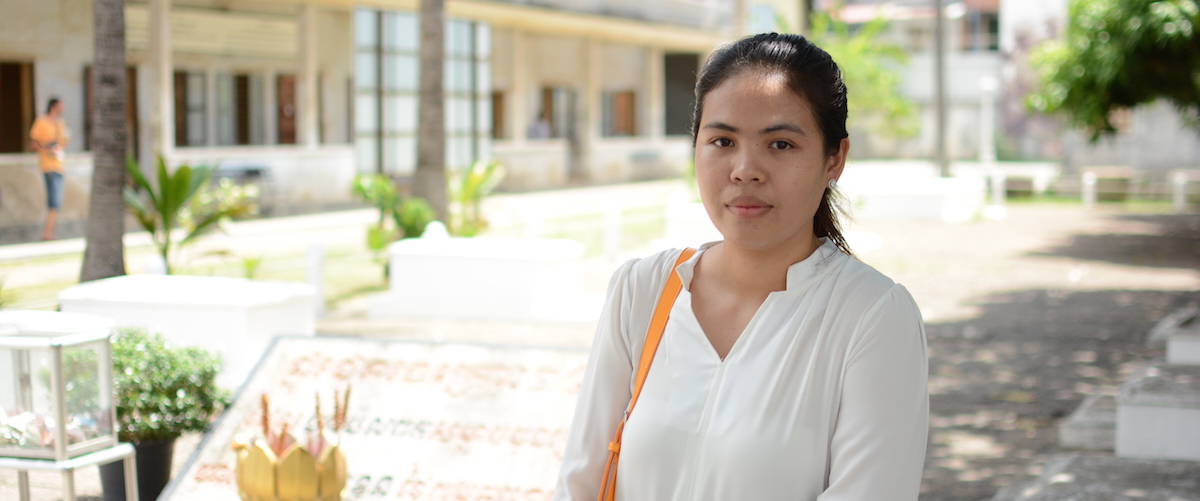S21, or Tuol Sleng Genocide Museum, chronicles the “sad days” of Cambodia.
Stepping through the gates of Tuol Sleng Genocide Museum is a harsh reminder of man’s inhumanity to man. It’s just one of the 167 Khmer Rouge prisons that were running in Cambodia from 1975 to 1979.
When the Khmer Rouge entered Phnom Penh on April 17, 1975, the people celebrated. For the locals, the Khmer Rouge brought an end to the civil war as well as a much-wanted distribution of wealth. But what the people didn’t expect was the way that would happen.
Upon arriving, the Khmer Rouge forced over two million people out of the city in to rural areas to begin agricultural work. Many died during this period.
Our guide’s mother was one of those evacuated. She was 14 at the time and was sent to work 14-hour days on a farm. Her daughter and our guide, Daleth Diweann, has returned to Phnom Penh and the prison to tell her family’s story.
In 1976, the Khmer Rouge took over Tuol Svay Pray High School and turned it into a prison called S21. In a dreadful irony, a symbol of education and advancement became the site of torture and death.
In three years, eight months and 20 days, three million Cambodians were killed. The Khmer Rouge, under instruction from their fanatical and ultra Communist leader Pol Pot, killed all educated Cambodians leaving behind a generation of orphans.
A majority of the Khmer Rouge army came from rural, poverty-stricken areas. Most were convinced through deliberate propaganda, that educated people were the source of all poverty and would become the enemy. As a result, places like S21 came to exist with the young, often teenage guards, in control of the prisoners’ fate.
Anybody with glasses was taken prisoner; the glasses showing the wearer could read. Those with university, high school or even primary school education were taken prisoner and few survived. Throughout the Khmer Rouge regime, S21 would see 20,000 prisoners.
They were subject to water-boarding, held suspended from gallows and had their fingernails torn off. Each torture device was designed to extract any information from the victims, with many prisoners “confessing” just to relieve the torment. For most, they were executed anyway.
During our tour, we walked past 14 graves, each representing a body that was found in the prison upon Phnom Penh’s Vietnamese liberation in 1979.
When the Vietnamese arrived, there were 11 survivors within the prison walls: seven adults and four children. One of the adults was Chum Mey, a man now 85. As we neared the end of the tour, we were able to see Chum. He returned to the prison to spend his last days acknowledging the past and showing the sadness for future generations.
As S21 grew and adopted a rhythm of execution, the soldiers began meticulously photographing each prisoner. Today, the former cells and torture chambers have countless photos of the prisoners. It serves as a reminder to us, the visitors, that the victims were mothers, brothers, sisters, fathers and children.
The tour also gave us a small understanding as to why this beautiful country still lives like a first world when surrounding nations like Thailand have advanced so much farther.
The great sadness that descended upon Cambodia in the 1970s has far-reaching consequences and will forever be remembered through memorials like Tuol Sleng.


